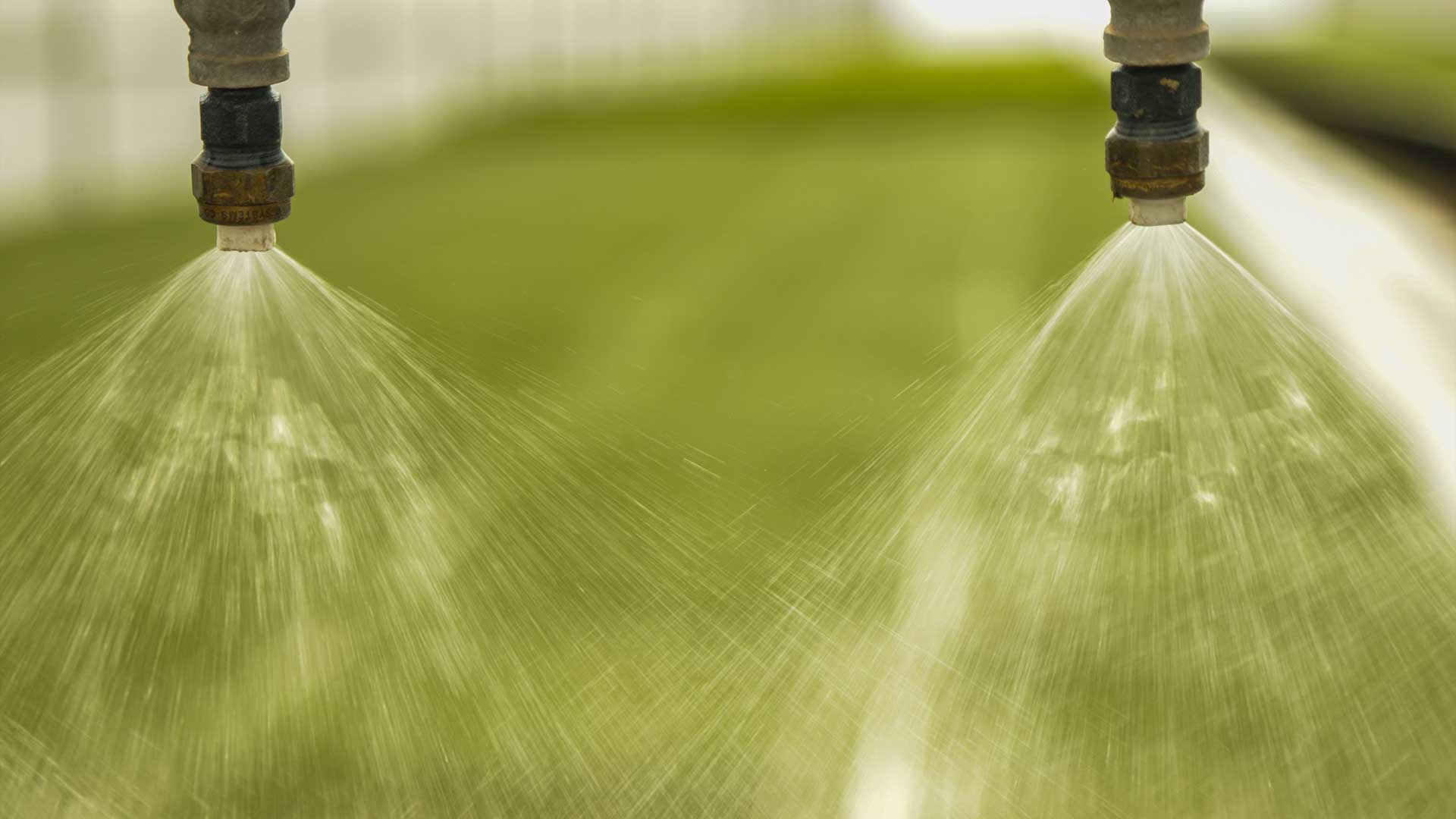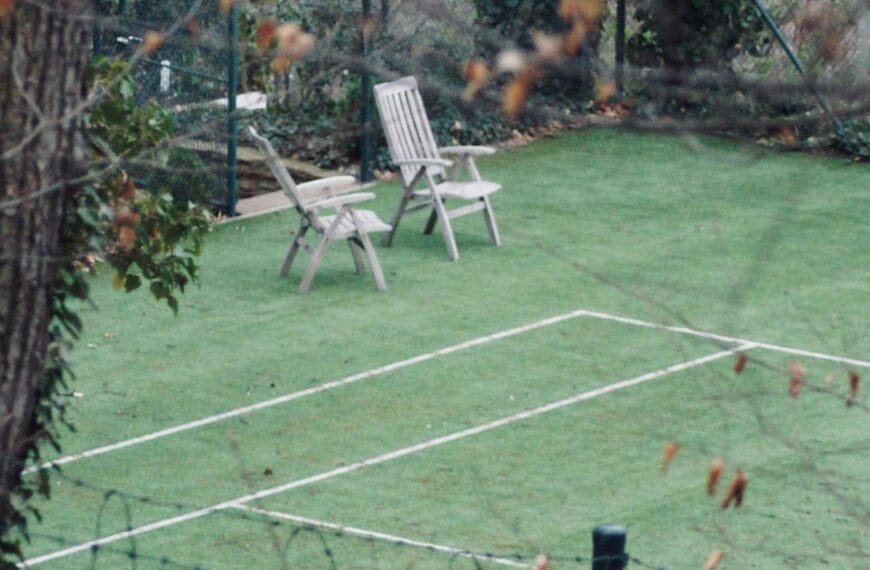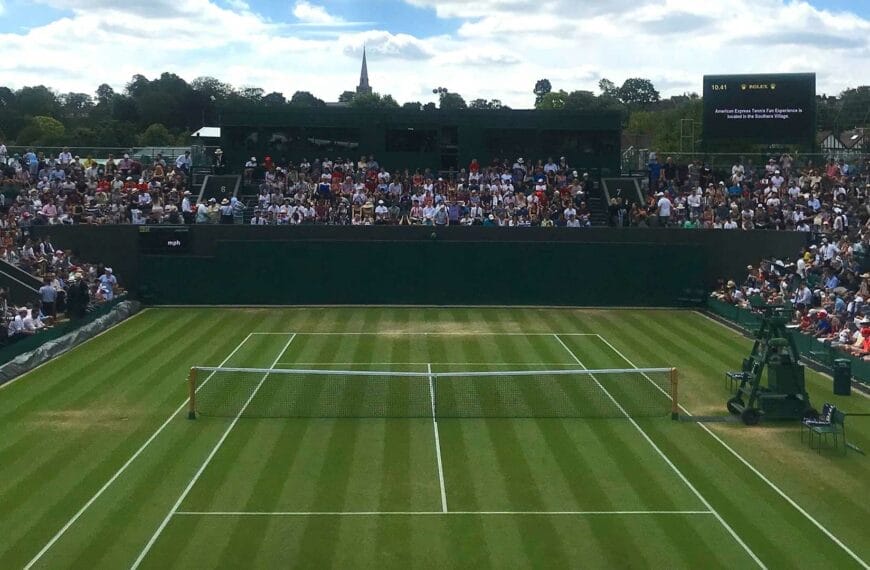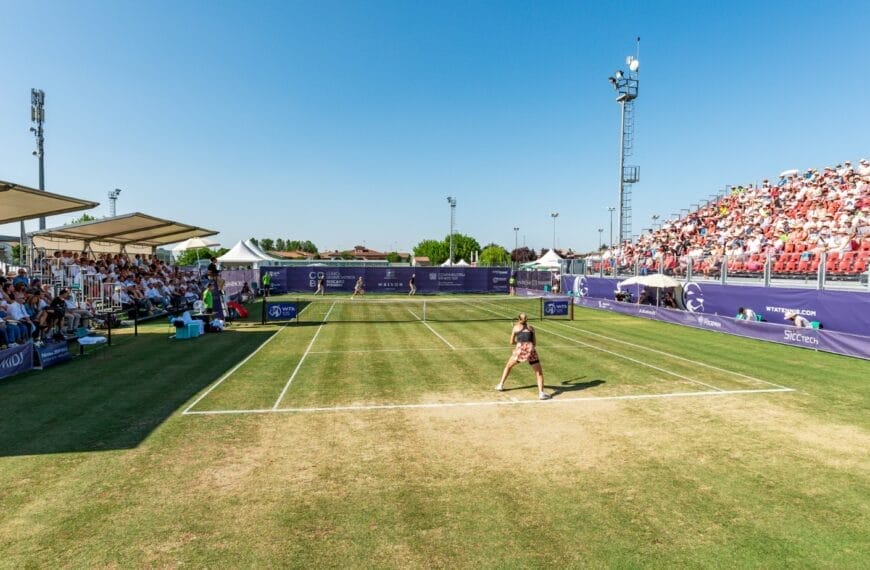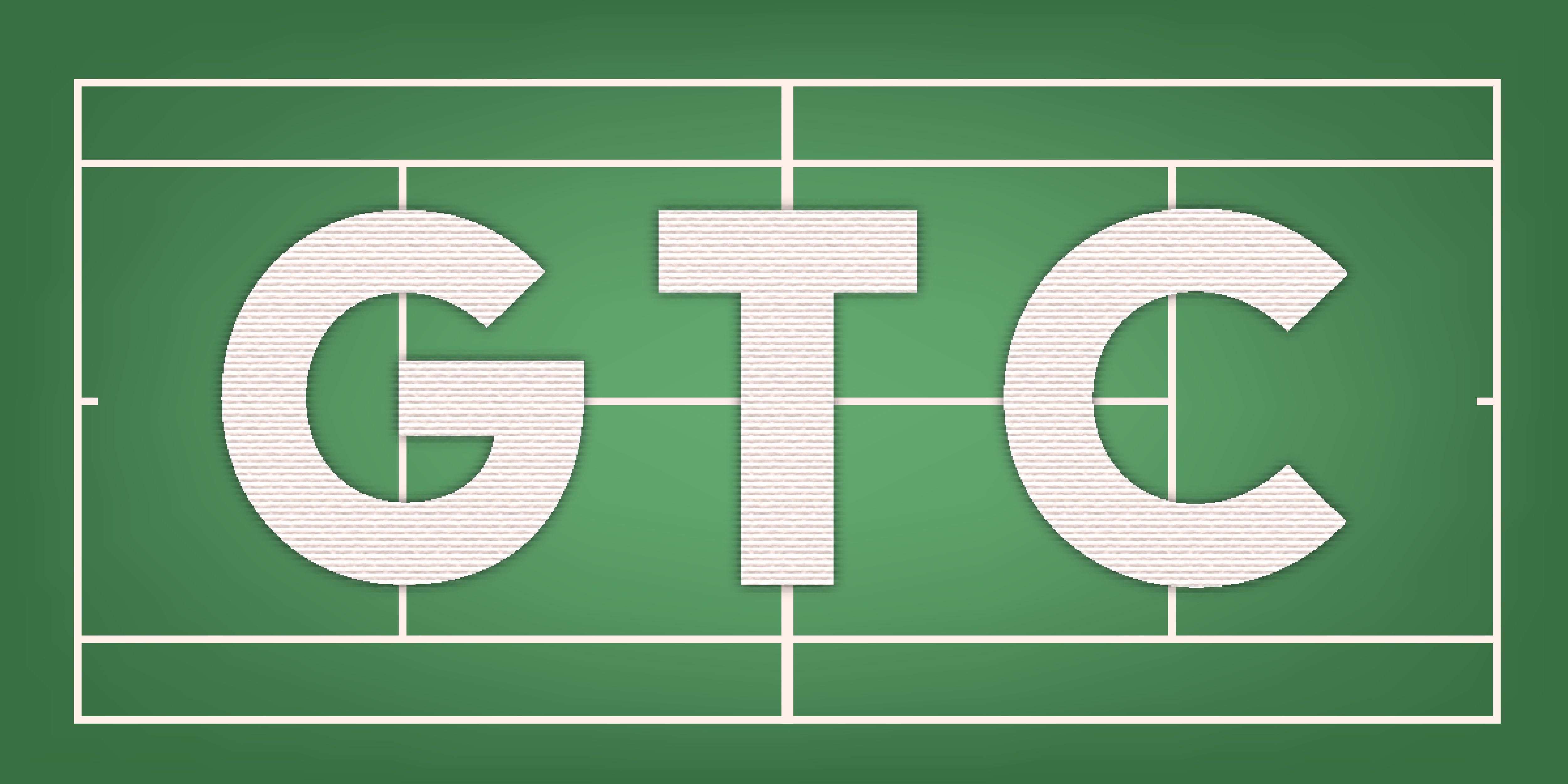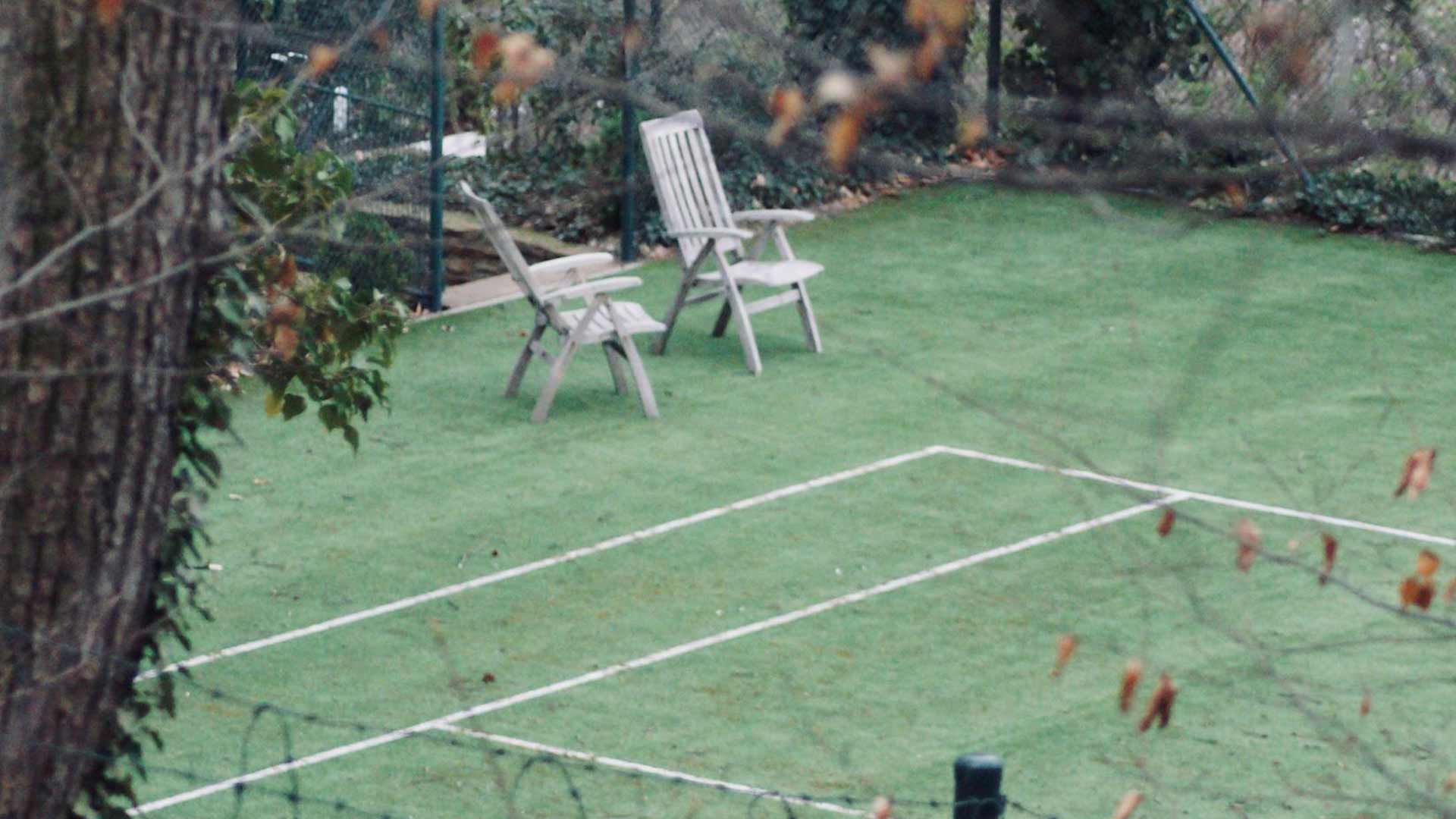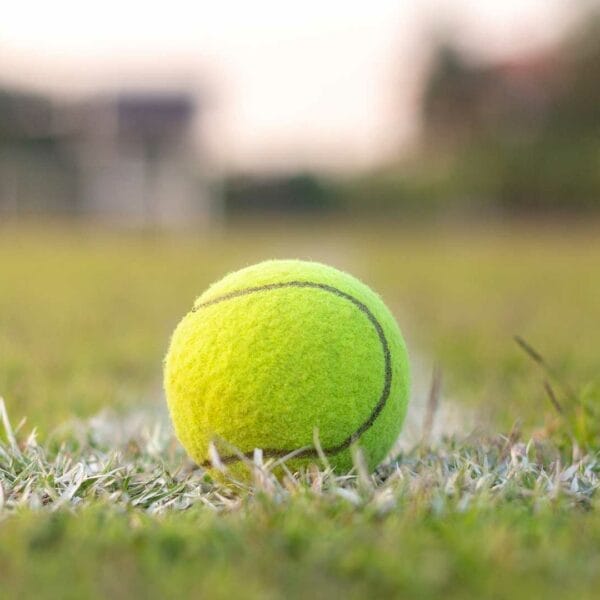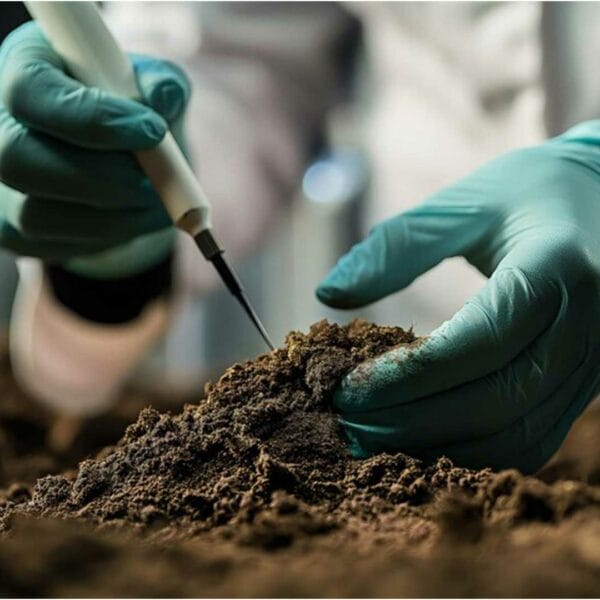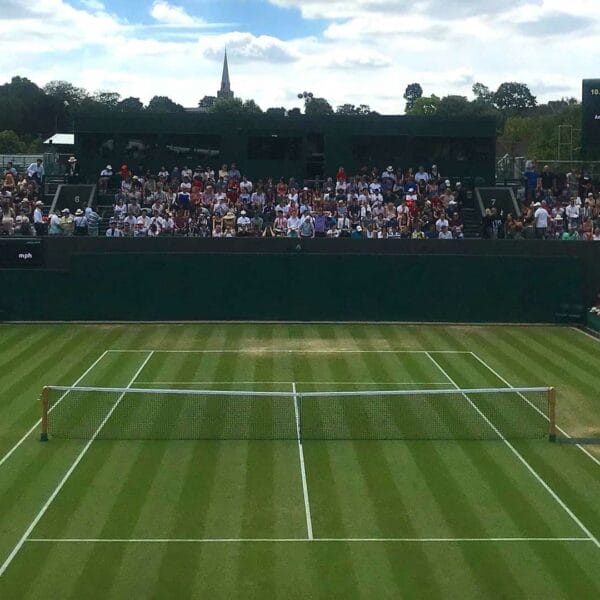Building a grass tennis court is an endeavour that combines a love for the sport with a commitment to sustainability and meticulous craftsmanship. It’s not merely about laying down some grass and hoping for the best. Instead, it involves a calculated approach to create a playing surface that is not only beautiful and functional but also environmentally responsible. With the rise of eco-consciousness in sports facilities, constructing a sustainable grass tennis court is more relevant than ever.
Build a Sustainable Grass Court
Learn essential steps for constructing an eco-friendly grass tennis court tailored to your needs.
Choose a location with good drainage and sunlight to enhance sustainability and playability.
Use high-quality materials and specific grass types, like perennial ryegrass or fescue, for optimal performance.
Regular maintenance, including mowing and watering, is crucial to ensure the longevity and health of your grass court.
Choose the Right Location
The first and arguably most critical step in building a grass tennis court is selecting the right location. You can’t just pick any patch of grass and expect it to transform into a Wimbledon-worthy court.
Choosing the ideal location involves several considerations:
- Sunlight and Shade: Your court needs ample sunlight to ensure healthy grass growth. However, too much direct exposure can scorch the grass, especially in summer. A balance of sunlight and shade is essential.
- Wind Protection: A location shielded from strong winds will not only make for better playing conditions but also protect delicate grass blades from damage.
- Natural Drainage: Proper drainage is vital. A location with natural slopes can facilitate water runoff, preventing waterlogging which can ruin the grass and the integrity of the court.
- Soil Quality: Conduct a soil test to ensure the ground can support grass growth. Amending the soil will be necessary if it lacks essential nutrients or has poor structure.
Insider Tip: Integrating windbreaks like hedges or low walls can enhance the microclimate around your court, optimizing both playability and grass health.
Get the Right Equipment
A common mistake is underestimating the need for specialized equipment. Building a grass tennis court isn’t a DIY project you can complete with a standard lawnmower and a few bags of seed.
Essential equipment includes:
- Laser Leveling Tools: Precision is key. Uneven surfaces can lead to inconsistent ball bounces and increased injury risk.
- Heavy Rollers: These are crucial for compacting the soil and later the turf, providing a smooth, firm surface for play.
- Seed Spreaders and Sprayers: Uniform distribution of seeds and fertilizers ensures even grass growth.
- Irrigation Systems: Efficient water management systems, ideally solar-powered, are critical for sustainable maintenance.
Insider Tip: Invest in quality equipment from the start. It might seem costly initially, but it pays off in the long run with a superior playing surface.
Build the Base
The base of your grass tennis court is its foundation. Without a solid, well-constructed base, your grass court will struggle to achieve the durability and performance expected of a professional-level playing field.
Starting with the base involves:
- Excavation: Remove topsoil and debris to a depth of about 8-12 inches depending on soil quality.
- Layering: Install a layer of crushed stone or gravel to enhance drainage. This layer should be about 4 inches thick.
- Adding a Sand Layer: On top of the gravel, lay a 2-3 inch layer of coarse sand. This helps with water filtration and provides a stable growing medium for the grass.
- Compaction: Use heavy rollers to compact each layer thoroughly, ensuring stability and uniformity.
Insider Tip: Incorporating recycled materials into your base layers can enhance sustainability and reduce costs.
Lay the Turf
Once the base is ready, laying the turf is where the court starts to come alive. Choosing the right grass variety is crucial for ensuring a sustainable and playable surface.
Key steps in laying the turf include:
- Grass Selection: Opt for drought-resistant varieties like Bermuda grass or Perennial Ryegrass, which require less water and maintenance.
- Sod vs. Seed: While sodding provides instant coverage, seeding is more cost-effective and allows for a deeper root system.
- Installation: If using sod, lay strips tightly together to minimize seams. For seeds, use a spreader for even coverage, followed by a light rolling.
- Initial Watering: Establish a rigorous watering schedule post-installation to support root establishment. Gradually reduce the frequency to promote deep-root growth.
Insider Tip: Avoid over-fertilizing. Focus on organic compost and natural fertilizers to boost soil fertility without causing chemical runoff.
Maintain the Court
Maintenance is the unsung hero of a successful grass tennis court. While the initial construction might seem daunting, consistent upkeep is where true dedication shines through.
Essential maintenance tasks include:
- Regular Mowing: Keep the grass between 8-13 mm in height for optimal playability. Mow at least twice a week during the growing season.
- Aeration: Regularly aerate to prevent soil compaction and promote healthy root systems.
- Fertilization: Use natural, slow-release fertilizers to maintain nutrient levels.
- Weed and Pest Control: Employ eco-friendly methods to manage weeds and pests, preserving the court’s integrity and environmental health.
Insider Tip: Water early in the morning. This minimizes evaporation and allows grass to dry before nightfall, reducing fungal risks.
How Much Does it Cost to Build a Grass Tennis Court?
The cost of building a grass tennis court can vary widely based on location, materials, and additional features. On average, expect to spend anywhere from $50,000 to $150,000.
Factors affecting cost include:
- Land Preparation: Excavation and base construction can be labor-intensive and costly.
- Grass Selection: Premium grass varieties and sod installation increase expenses.
- Irrigation Systems: Advanced systems, particularly those powered by solar energy, add to upfront costs but save in the long run.
- Additional Features: Lighting, fencing, and seating can significantly raise the total investment.
For a more detailed breakdown of costs, visit our comprehensive step-by-step guide on building a grass tennis court.
How Long Does it Take to Build a Grass Tennis Court?
Building a grass tennis court is not a weekend project. It requires careful planning and execution, typically taking anywhere from 3 to 9 months for completion, including grass establishment.
- Site Preparation: 1-2 months for excavation, drainage, and base construction.
- Grass Establishment: 2-3 months for grass to root and develop a playable surface.
- Final Adjustments: 1-2 months for any additional features and final touches.
Remember, patience is key. Rushing the process can compromise the court’s quality and longevity.
Can You Build a Grass Tennis Court in Your Backyard?
While the prospect of a backyard grass tennis court is enticing, it requires careful consideration of space, resources, and commitment.
- Space Requirements: A standard tennis court is 78 feet long and 36 feet wide. Ensure you have enough room, including buffer zones for safety.
- Local Regulations: Check zoning laws and obtain necessary permits before construction.
- Maintenance Commitment: A backyard court demands the same rigorous maintenance as a professional one.
For those ready to take the plunge, our guide on how to build a tennis court from scratch offers invaluable insights.
What is the Best Grass for a Tennis Court?
Choosing the right grass is crucial for a sustainable and high-performance tennis court. The best grass varieties balance durability with environmental friendliness.
- Bermuda Grass: Known for its resilience and fine texture, it’s ideal for warm climates.
- Perennial Ryegrass: Offers a lush appearance and tolerates cooler climates, though it requires more maintenance.
- Fescue: Low-maintenance and drought-resistant, suitable for eco-conscious projects.
Insider Tip: “Blend grass varieties for year-round performance,” suggests Dr. Linda Park, a turf management expert. “This approach maximizes durability and aesthetic appeal.”
Is it Hard to Maintain a Grass Tennis Court?
Maintaining a grass tennis court is a labor of love. While it can be demanding, the rewards of a pristine playing surface make it worthwhile.
Challenges include:
- Time Commitment: Regular mowing, watering, and aeration are time-intensive.
- Seasonal Variations: Adjustments are needed to accommodate weather changes and growing cycles.
- Pest and Disease Management: Ongoing vigilance and eco-friendly practices are essential to keeping the grass healthy.
For advice on specific climate challenges, explore our article on maintaining grass tennis courts in cold climates.
In conclusion, building a grass tennis court is a significant investment of time, money, and effort. However, with careful planning and a commitment to sustainability, it is a highly rewarding project that not only enhances your property but also provides a beautiful space to enjoy the timeless sport of tennis. The blend of personal passion and environmental stewardship makes for a truly unique and fulfilling endeavor, one that can offer joy and satisfaction for years to come.
Questions
Who can help design a sustainable grass tennis court?
Professional landscape architects and sports facility consultants can assist.
What materials are needed for a sustainable grass tennis court?
You will need eco-friendly turf, organic soil, and sustainable drainage systems.
How can you maintain a sustainable grass tennis court effectively?
Regular mowing, proper irrigation, and organic fertilizers ensure sustainability.
Can I build a grass tennis court in my backyard?
Yes, but ensure you have adequate space, sunlight, and local regulations allow it.
What costs are involved in building a sustainable grass tennis court?
Initial expenses include materials, labor, and ongoing maintenance costs.
How do I overcome challenges in building a grass tennis court?
Research best practices and consult experts to address potential concerns effectively.

